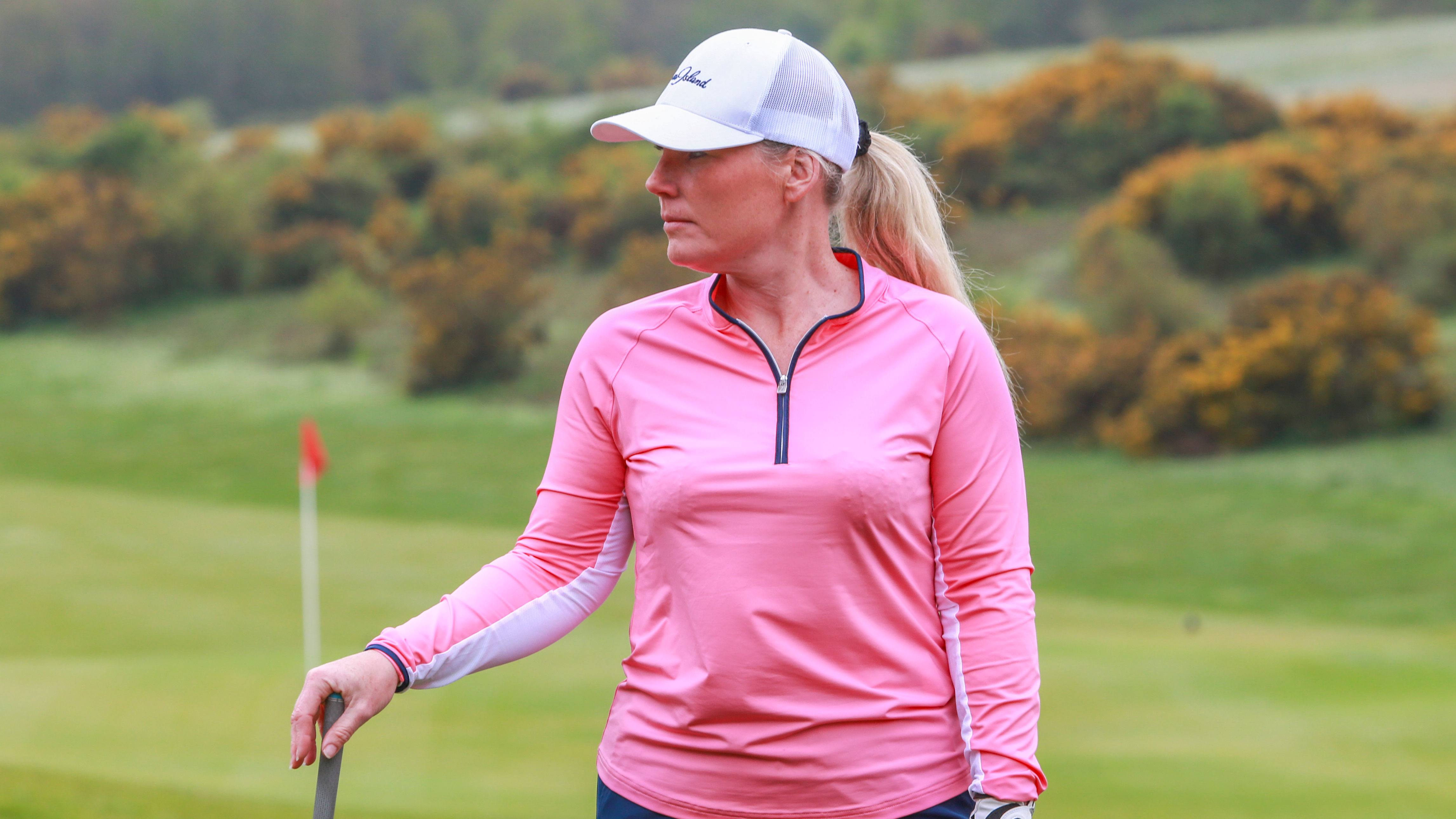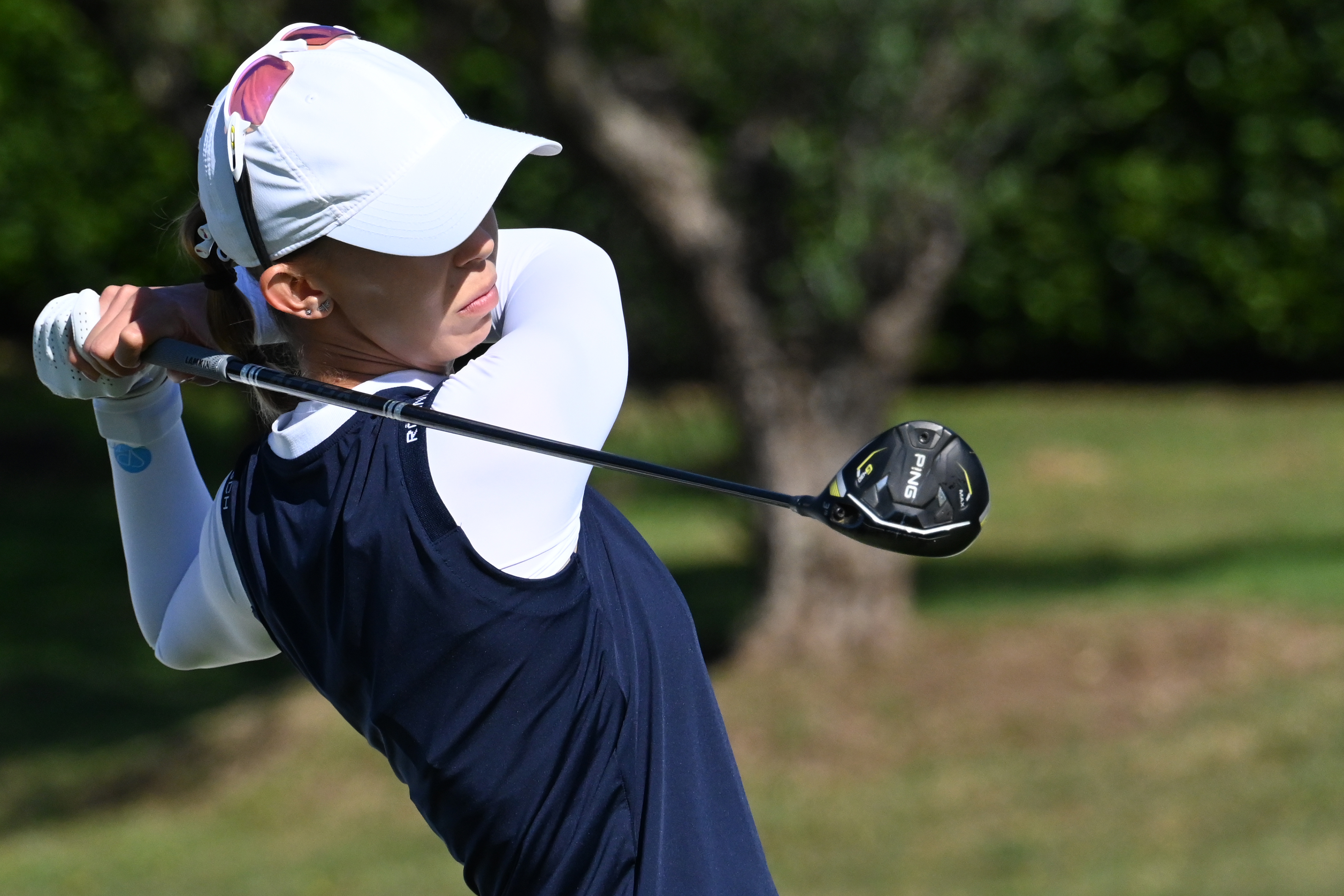
Until recently, I never really thought about the impact that our chest size has on the golf swing, because I’m small breasted so it has never been an issue for me.
But while playing golf with a friend she confessed that she had been for a ‘boob lesson’! She’s got a lovely pair of double-D cup breasts, and quite frankly, they get in the way.
Her coach has apparently been trying to address her rather large problem, as They also affect her balance and ability to make a full backswing turn.
Factors such as where to position her boobs at address, whether her arms should hang underneath, above, to the side, or just squeeze them in…you name it, she’s tried it.
One of my mum’s best golfing friends always used to make me laugh with her jokes about her “assets”, saying things like “it’s going to be a boobs up day today,” or “turn tits to target” is what she told herself!
Whatever way we look at it, women have a huge genetic hurdle to overcome, compared to our male counterparts, when it comes to the golf swing.
Can you imagine a top PGA Tour player like Rory McIlroy being able to swing the golf club at 130mph with his big torso twist, along with a big pair of breasts whipping around in front of him?!
I could be classified as one of the lucky female golfers. I’ve got small breasts that don’t get in the way. But, I can honestly say, regardless of their size, I’ve never had a golf lesson when boobs have ever been addressed.
This might be because my chest is small but I dare say there’s also an element of embarrassment from the golf coaches I’ve worked with.
I blame the media and society for sensationalising the female chest and making breasts an object of sexual desire, rather than looking at them from the purely functionality standpoint of why women actually have them, to breastfeed our children.
I recall the days of breastfeeding and having to deal with swollen, leaking boobs and breast pads inside my bra on the golf course when my son was a baby, but that’s a whole other subject that’s often ignored!
It is a subject that Lewis Clarke, Sport Science Lead at the Professional Golfers Association has been heavily involved in.
As the biomechanics expert for the PGA, and also a student at the University of Portsmouth, Clarke was shocked to discover how little literature there was on the subject of female breast health and their support in golf.
“I was introduced to the research group in breast health at the University of Portsmouth by Professor Joanna Wakefield-Scurr,” explains Clarke.
“She and I spent hours combining our expertise, mine in golf biomechanics, hers in breast health, and saw an opportunity to do further research.”
Clarke’s research led him to quickly discover that literature on the subject was shamefully limited.
“We know a lot about breasts and bras for other sports, but no research had been conducted with female golfers before,” explains Wakefield-Scurr.
“By not wearing a correctly fitted bra women are at risk of breast tissue damage, stretch marks and worse.”

Clarke spent 2024 surveying tour professionals on bra usage and their sentiments towards breasts in the golf swing, and collaborated with both the Ladies European Tour and The R&A.
As a collective, they worked together throughout the season, to help conduct a scoping review of the area of breast health in golf.
This initially involved a survey to assess players perception and responses to bra issues in golf. They followed this up by educating players and staff at events across the LET, the LPGA and Access series. Over 170 players were surveyed.
“We conducted educational workshops for players and practitioners, such as tour physios, S&C coaches, masseuses and so on,” explains Clarke.
Partnering with adidas, the research team also provided bra fittings and a free sports bra to every player fitted, with 85 players fitted and prescribed the correct sports bra.
I will be the first to admit that before writing this article I didn’t put any thought into what bra I wore for golf. I simply chose one that was comfortable.

But having my eyes opened by Clarke’s research study I started questioning my choice.
I would never dream of going to the gym to work out wearing a traditional underwired bra, or to play a high impact game like tennis. Why was I wearing a normal high street bra to play golf?
I guess because I wasn’t treating it like an athletic sport. But unknowingly, I was probably doing my body and my breasts harm by not supporting them appropriately.
The golf swing is an athletic move and I’m ashamed to say I have neglected to consider this, up until now, when I go to the wardrobe and select my underwear for a game.
I’m not alone. Although still only midway through his study, it’s a trend identified by Clarke’s research.
“One of the key findings is that golfers' awareness and knowledge of breasts and bras is very limited,” Clarke admits.
“Extremely poor, compared to other sports, in fact. Also, golfers' uptake in sports bra usage is significantly lower than other sporting activities.”
Yet the tour players who were screened by the breast health team did perceive that the breast and bra have an influence on their technique and performance, particularly in terms of their set-up fundamentals and the backswing move.
“Getting fitted for a suitable sports bra was unanimously well-received,” Clarke added.
I have certainly started taking breast health more seriously by choosing to wear a sports bra for my games of golf now. Will you?







